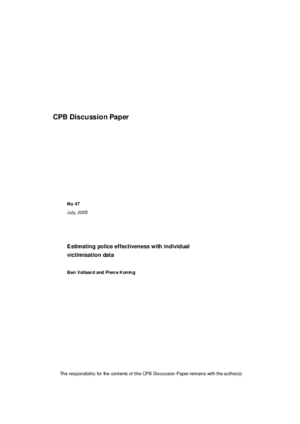Estimating police effectiveness with individual victimisation data
Grotere bewegingsvrijheid dankzij meer politie
We are sorry, unfortunately there is no English translation of this page.
In this paper, we present evidence on the effect of greater numbers of police personnel on victimisation of crime and experience of nuisance. We make use of individual data from a Dutch victimisation survey unique in its size, duration and scope.
By using individual victimisation data we provide evidence on the effects of police on nuisance rather than 'hard crime' only, we circumvent measurement error common to police statistics, and we are able to control for both individual and municipality characteristics. We find significantly negative effects of higher police levels on property crime, violent crime and nuisance.
The estimated elasticities are in line with the literature based on police statistics. Urban police forces are more effective than rural police forces for most types of crime and nuisance. Additionally, we find experience of nuisance mostly to be a characteristic of the municipality in which someone lives, with little variation across individuals in a municipality, whereas victimisation of violent crime varies across individuals rather than municipalities. For property crime, individual and municipality characteristics are about equally important. Finally, we provide evidence that greater police protection allows people to move around more freely, which is an additional benefit of higher police levels not reflected in a decline in victimisation rates.
